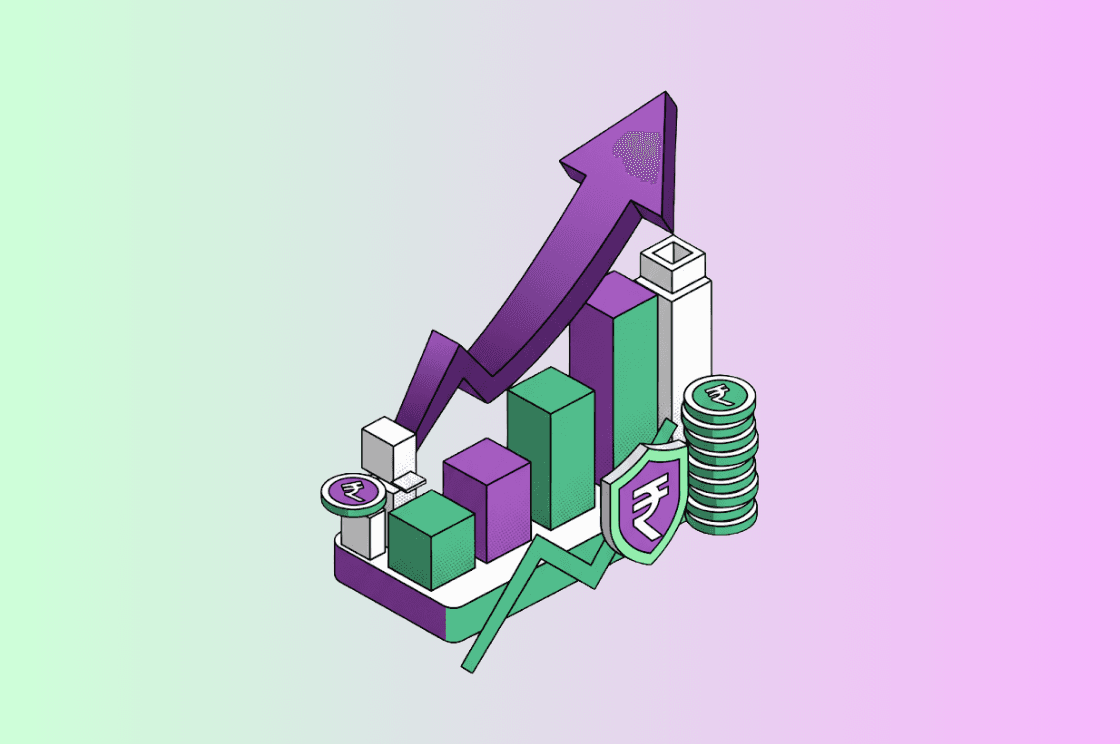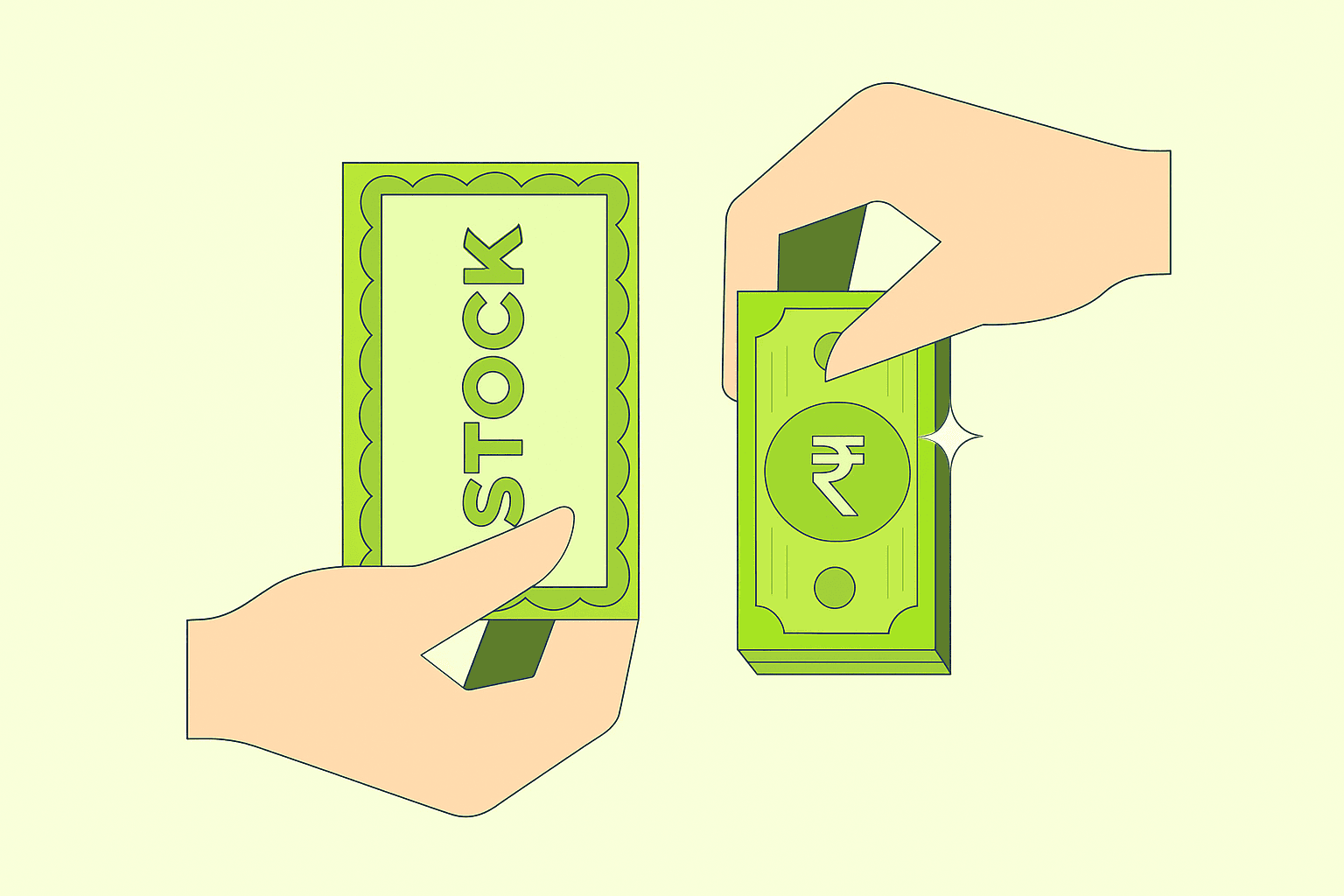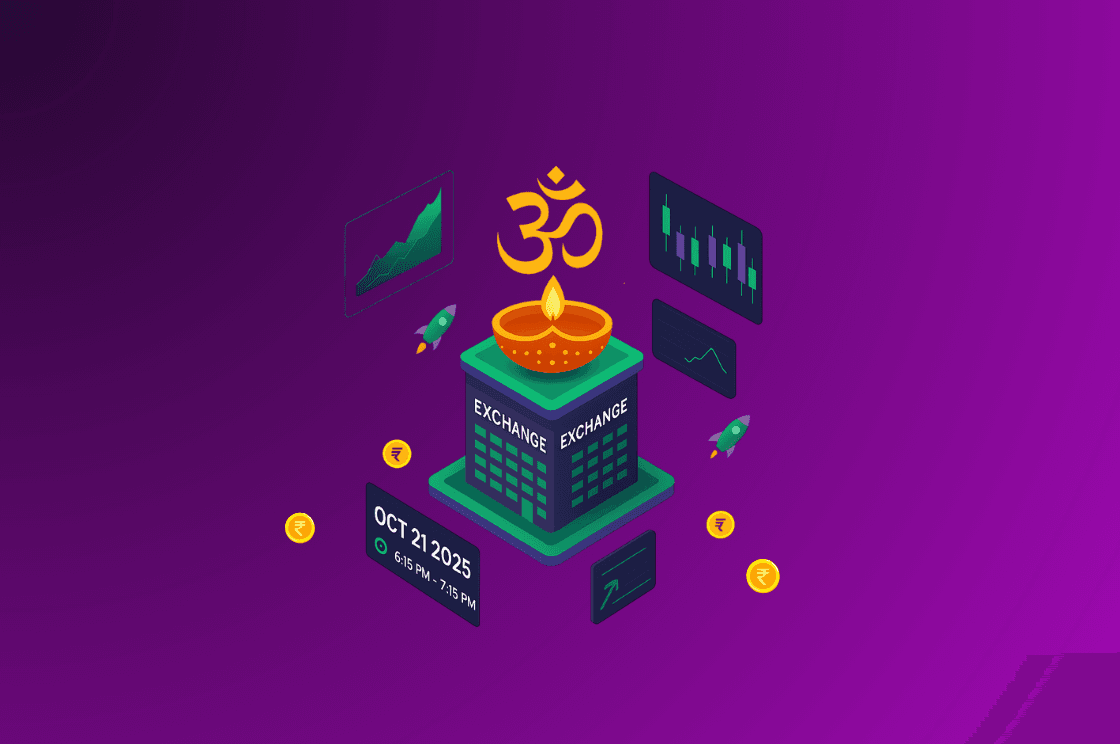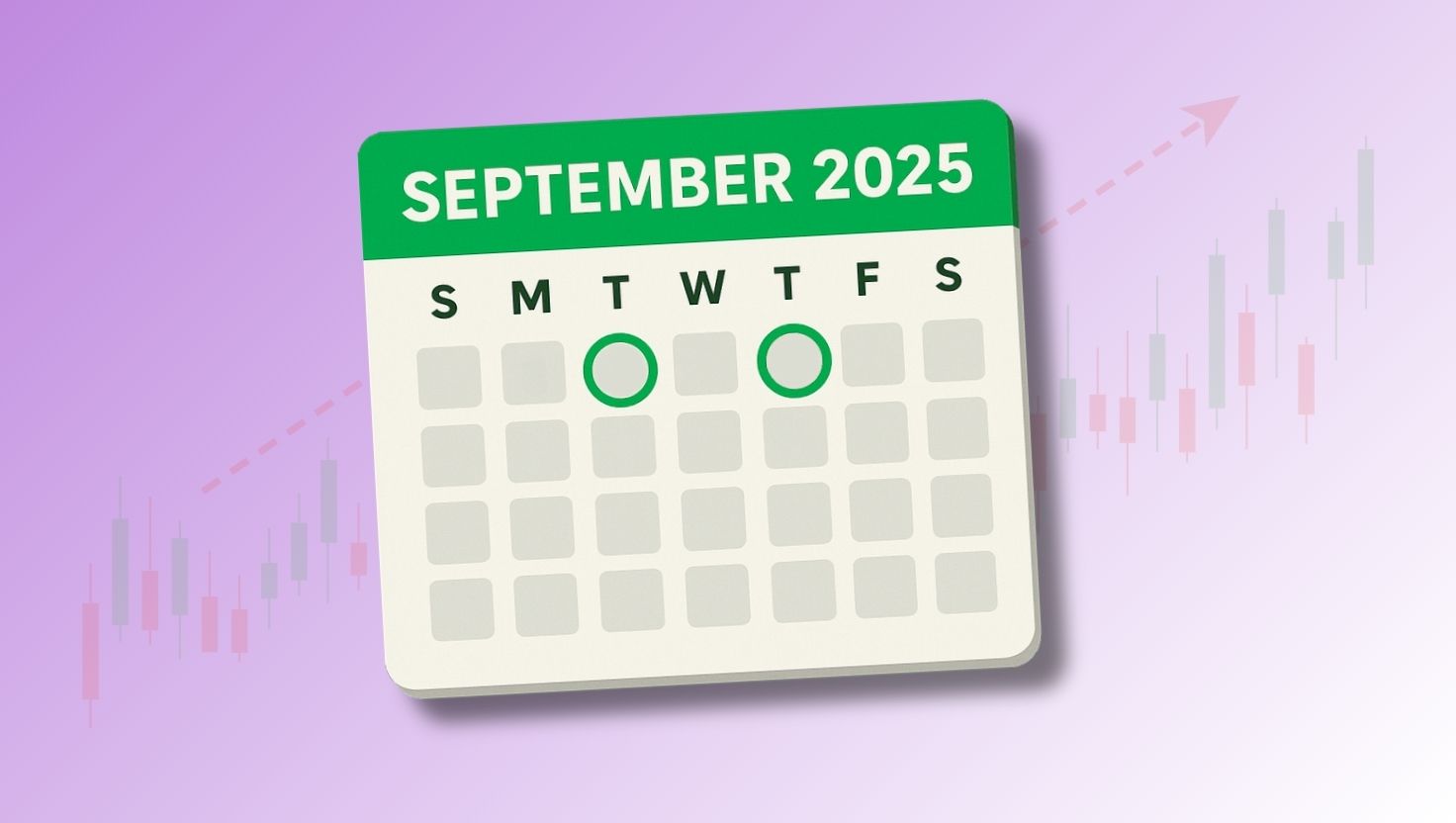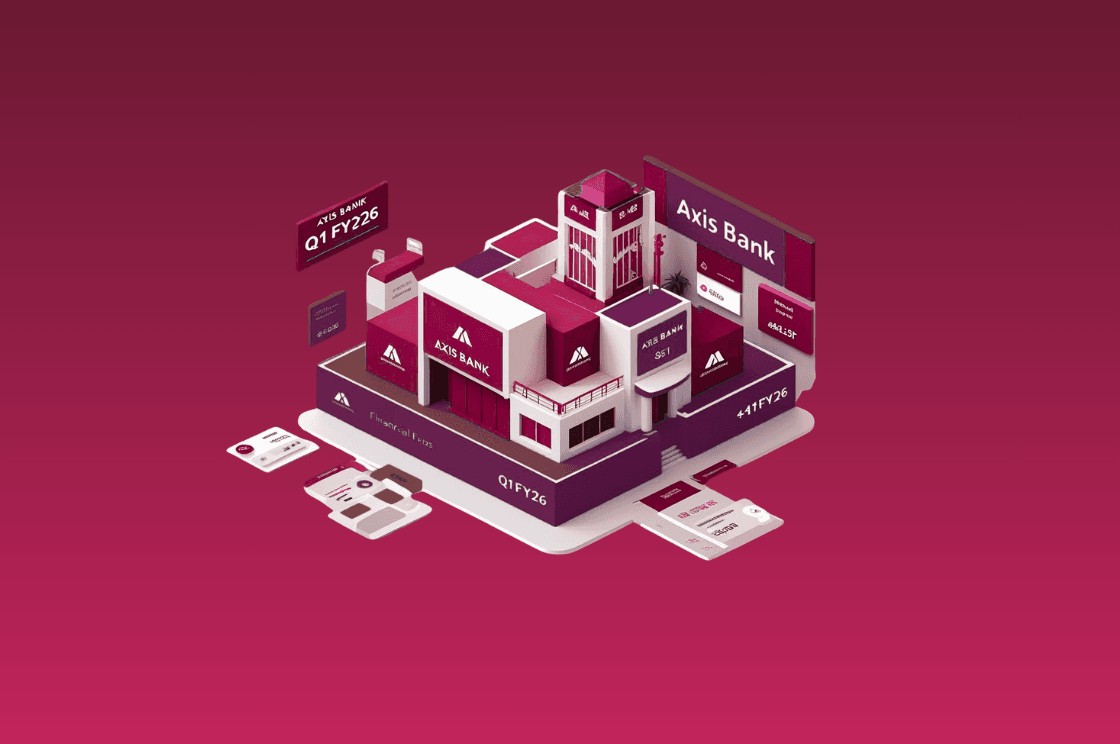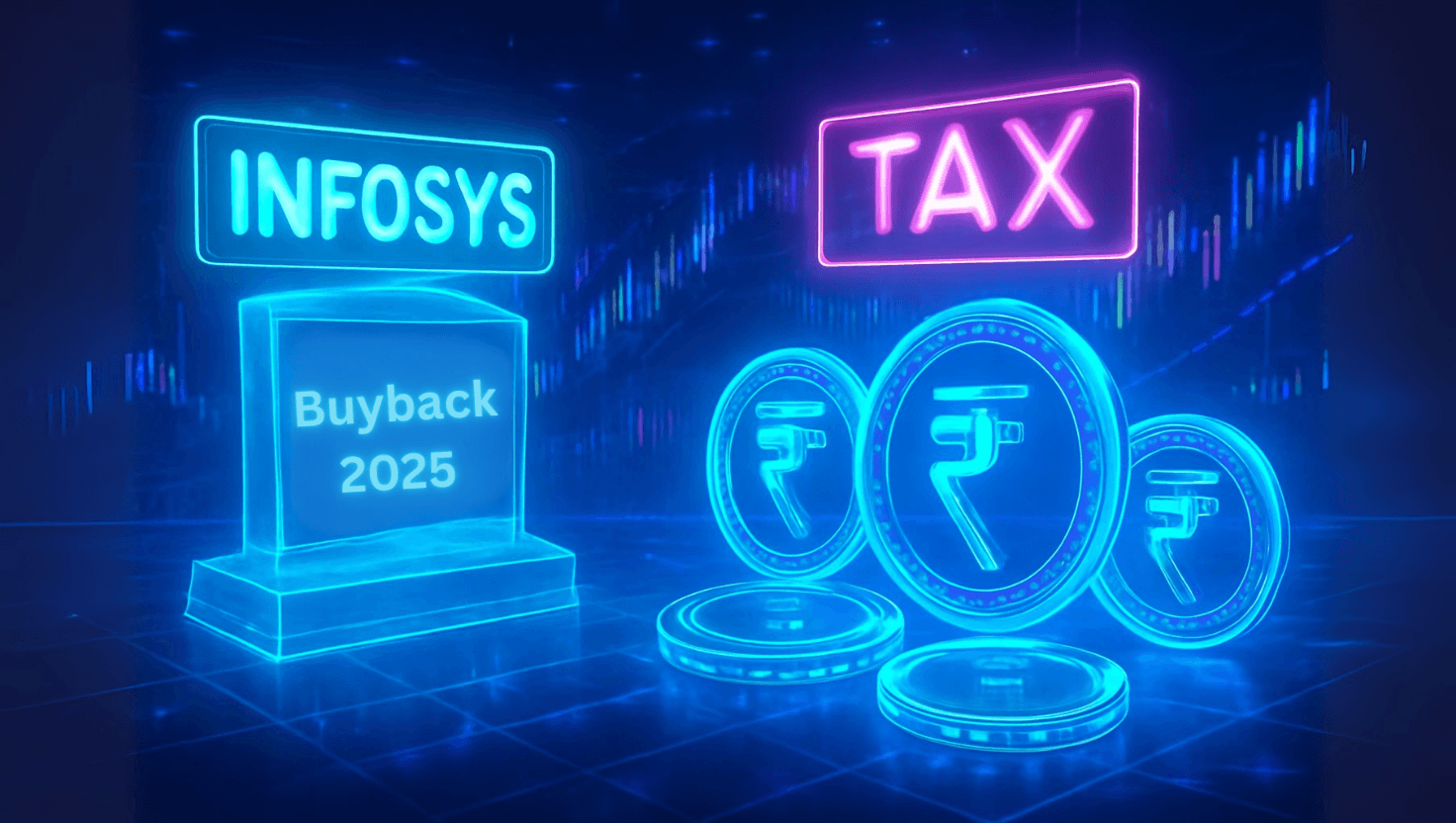
The Infosys Buyback: Should you participate & tax impact
By
Arihant Team
Infosys’s ₹18,000 crore buyback offers ₹1,800 per share. On paper profits vanish after tax changes.
In This Article
- Infosys ₹18,000 crore Buyback
- Quick snapshot of Infosys buyback 2025
- What is a buyback?
- How to participate in Infosys buyback?
- Why is Infosys doing this buyback?
- What this means for shareholders?
- Infosys buyback: tax implication
- Capital loss angle
- The Catch: Low Acceptance Ratio
- Should you participate?
- Wrapping up
- FAQs on Infosys Buyback 2025
Infosys ₹18,000 crore Buyback
Infosys is back in the news with its biggest-ever buyback! The company has announced a ₹18,000 crore plan to repurchase up to 10 crore shares at ₹1,800 each. Considering Infosys was trading around ₹1,509 on 15th Sept 2025 when the buyback was approved, that’s nearly a 19% premium.
Infosys has a consistent history of rewarding shareholders through buybacks. The company first initiated one in 2017, worth about ₹13,000 crore, followed by another in 2019 of roughly ₹8,260 crore. In 2021, it carried out ₹9,200 crore buyback, and in 2022 it returned again with a ₹9,300 crore program. The latest ₹18,000 crore plan marks its fifth buyback in just eight years, underscoring its ongoing commitment to shareholder returns.
Let's dive in and learn everything from what this buyback means for the company to its tax implication for you and whether you should participate in Infosys buyback. But before we start, let’s first understand the basics.
Quick snapshot of Infosys buyback 2025
- Buyback Size: ₹18,000 crore
- Price: ₹1,800 per share
- Mode: Tender offer
- Promoter Participation: Yes
- Face Value: ₹5 per share
- Record Date: Yet to be announced
- Acceptance Ratio (small shareholders): 8.38% (estimated). Under SEBI rules, small shareholders are those holding shares worth less than ₹2 lakh on the record date.
This is Infosys’ fifth buyback since 2017 and will be conducted through a tender offer. In this method, the company offers to buyback a set number of shares at a fixed price above the current market price. Infosys plans to repurchase around 10 crore shares at ₹1,800 each. The record date to determine eligible shareholders will be announced soon.
What is a buyback?
A share buyback is when a company buys back its own shares from the market or directly from shareholders, usually at a premium. As a shareholder, if you tender your shares, you get cash immediately. If you don’t, your portion of the remaining shares usually becomes slightly bigger.
A buyback reduces the total number of shares available, which can increase the value of the ones left. It’s a way for companies to return extra cash to shareholders, either instead of or alongside dividends.
There are two ways a company can execute buyback:
- Tender Offer: This is a direct invitation from the company. It says, "We'll buy your shares for a specific, higher price—for example, ₹1,800. This offer is only for a limited time." You get a guaranteed, premium price for the shares you sell.
- The Open-Market Offer: This is like the company going shopping for its own shares on the stock exchange. It says, "We'll buy our shares directly from the market over the next few months, and we won't pay more than a certain price." The price isn't fixed; it changes with the market.
Why do companies do this? There are a few reasons:
- Reward shareholders: Companies usually announce buybacks at a premium, giving investors a chance to sell at a higher price.
- Boost confidence: Fewer shares in circulation often improve earnings per share (EPS) and signal that the company believes in its strong fundamentals.
- Efficient use of cash: Instead of sitting with large piles of idle cash, companies pay cash to their shareholders through buyback.
A buyback is a way for companies to share their wealth while strengthening investor confidence.
Now you must be wondering what happens after the buyback? Once the company finishes the buyback, fewer shares are left in the market. The company’s profit is now divided among fewer shareholders, which increases the earnings per share (EPS). This often pushes the stock price higher, benefiting the remaining shareholders.
How to participate in Infosys buyback?
If you hold Infosys shares on the record date, you can apply for the buyback through your broker.
- Demat shares: Your broker transfers them to the clearing corporation.
- Physical shares: You submit certificates + documents to your broker.
- After the buyback closes:
a. Accepted shares are extinguished.
b. Money is credited to your account.
c. Unaccepted shares are returned.
Why is Infosys doing this buyback?
The timing of this buyback is interesting. Infosys’s stock has been a laggard since last three years and it has seen some pressure lately. Buying back shares at a 19% premium sends a clear message: management believes the stock is undervalued. It’s a strong vote of confidence in the company’s long-term growth, even in a challenging global economy.
The company also has a strong financial position, generating healthy free cash flow. This means they have the money to fund a large buyback. By reducing the number of outstanding shares, Infosys can improve key financial metrics like earnings per share (EPS). This can make the company more attractive to investors and potentially increase the stock's value over time.
What this means for shareholders?
You Can Tender Your Shares: If you own Infosys shares, you have the option to offer them back to the company at the buyback price of ₹1,800. This allows you to lock in the premium over the current market price.
Long-Term Benefits: Even if you choose not to sell your shares, you could still benefit. A reduced number of shares can lead to a higher EPS, which often improves the company's valuation in the long run.
Infosys buyback: tax implication
Until 30 Sept 2024, buybacks were tax-free for investors. The company paid a flat 20% buyback tax, and you kept the entire profit. But since 1 Oct 2024, the rules have changed that will have a bigger tax hit. So if you buy Infosys, here’s what will happen:
- The entire buyback amount of ₹1,800 will be taxed as dividend income.
- Infosys will deduct 10% TDS upfront.
- Your stock purchase cost will be treated as capital loss, which can only be adjusted against future capital gains, not against the buyback income.
- Your final tax depends on your income slab.
So, your slab decides whether you actually profit or even make a loss!
So if you decide to participate in the Infosys buyback and you purchased the stock at ₹1,509, whether you will make profit or loss will depend on your income tax slab:
Income Slab (FY26, New Regime) | Tax on ₹1,800 | Tax-Adjusted Buyback Price | Net Profit/Loss (vs ₹1,509 cost) |
Up to ₹4 lakh | Nil | ₹1,800 | Profit: ₹291 |
₹4 – 8 lakh | 5% (₹90) | ₹1,710 | Profit: ₹201 |
₹8 – 12 lakh | 10% (₹180) | ₹1,620 | Profit: ₹111 |
₹12 – 16 lakh | 15% (₹270) | ₹1,530 | Profit: ₹21 |
₹16 – 20 lakh | 20% (₹360) | ₹1,440 | Loss: ₹69 |
₹20 – 24 lakh | 25% (₹450) | ₹1,350 | Loss: ₹159 |
Above ₹24 lakh | 30% (₹540) | ₹1,260 | Loss: ₹249 |
As you can see, only low-slab investors (below 15%) really benefit. If you fall in higher slabs, you may end up with a loss compared to simply selling Infosys in the open market.
Capital loss angle
Here’s where it gets tricky:
- Buyback proceeds (₹1,800) are taxed as dividend income.
- Your purchase cost (₹1,509) becomes a capital loss.
- You cannot adjust this loss against the dividend income.
- You can only set it off against capital gains (if any) in future years.
This makes tax planning more complex, especially for larger portfolios.
The Catch: Low Acceptance Ratio
Another key factor in buybacks is the acceptance ratio — the portion of your shares the company actually buys back. This means that the company may not purchase all the shares you’re willing to sell through the buyback. Estimates suggest the buyback allocation rate is 8.38%. In this scenario, heres what will happen:
- If you plan to sell 112 shares via buyback (worth ₹1.69 lakh), only about 10 shares may actually be accepted.
- At ₹1,800 per share, that’s a ₹2,905 profit before tax or just 1.7% return.
- Even if 20–30 shares get accepted, the returns remain in low single digits.
So, the buyback isn’t a jackpot, and taxes can eat away these thin margins.
Should you participate?
- Low-income investors (up to 10% slab): Still worth it, since you pocket some decent gains.
- Mid-to-high slab investors (20–30%): Not attractive, selling in the market may be smarter.
- Small shareholders: Limited acceptance means limited gains. Don’t expect windfall profits.
Wrapping up
The ₹18,000 crore buyback of Infosys is attractive at the 19% premium it carries but the fine print is another matter. There is low acceptance ratio and the new tax norms so investors cannot expect to earn hefty gains — at best it is a small top-up on the return.
For long-termers though, the buyback still is management’s vote of confidence in the company and boosts metrics such as EPS. While it’s not a jackpot winner by any means, it’s another signal that Infosys is still rewarding its investors in multiple ways.
FAQs on Infosys Buyback 2025
Q. What’s the Infosys buyback price?
₹1,800 per share.
Q. What’s the buyback record date?
Not announced yet, you must hold Infosys shares in demat by then.
Q. How to apply for buyback?
Through your broker under the tender process.
Q. Do I need to pay tax?
Yes. The entire ₹1,800 per share is treated as dividend income. Infosys deducts 10% TDS upfront. Your cost becomes a capital loss, which you can only adjust against future capital gains.
Related Topics

